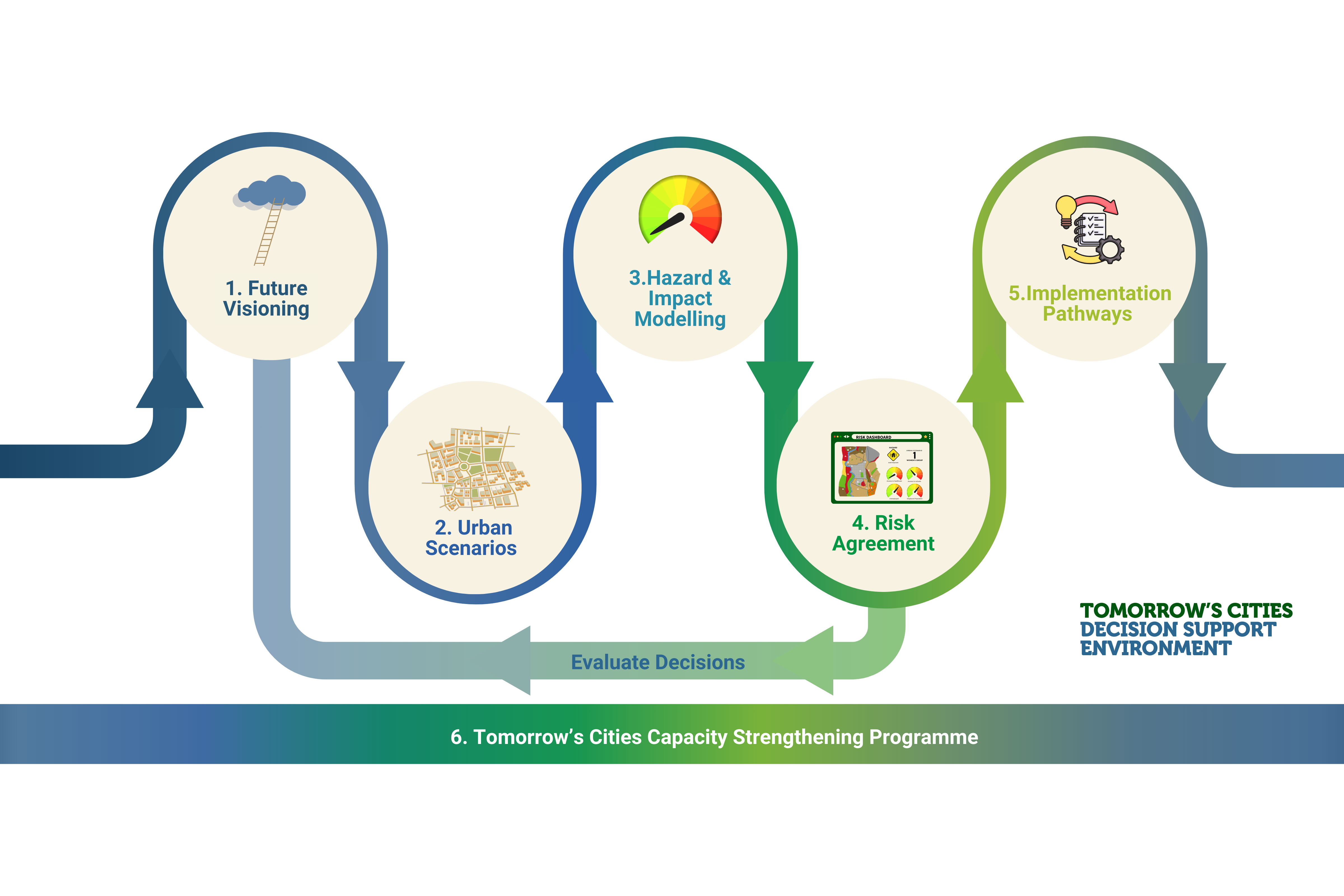
- Close
Equity and Inclusion
Inclusion and Equity are at the heart of Tomorrow’s Cities' approach to disaster risk reduction. This entails prioritizing voices that are systematically marginalized from decision making (inclusion) and understanding how to redistribute risk and the benefits of urbanization across a complex social spectrum (equity).
Gender plays a considerable role when it comes to systemic power imbalances in cities. In many contexts, women are underrepresented in decision making fora and more vulnerable to disasters due to issues such as care responsibilities and norms that shape everyday behaviours and differential access to infrastructure and facilities (such as public spaces, water taps and toilets). Intersectionality factors such as age, race/ethnicity, (dis)ability and class also shape how women and girls experience cities and hazard events.
Given the importance of the topic, Tomorrow’s Cities has been building dialogues around gender equity and intersectionality with its partners across the hub. Cities have taken different approaches; some sensitive to gender and others where gender is more central to impact pathways. Now, after nearly five years of engagements in several cities and with multiple communities, it is time to distil and comprehend the insights we gained, both in terms of the methodology that is offered (the TCDSE), and in terms of our different experiences on the ground.
This page is dedicated to showcasing how the Tomorrow’s Cities Decision Support Environment can be viewed from a gender and intersectionality perspective. It serves as a summary. The full guide can be downloaded at the end.
Decision Support Environment – Gender Perspective
Mainstreaming Gender and Complexity: An Introduction for Research Design
 The Tomorrow's Cities Decision Support Environment
The Tomorrow's Cities Decision Support Environment
The Tomorrow's Cities Decision Support Environment.
-
1. Scoping and Setting Up
-
Identifying policy challenges and opportunities for future risk reduction
The first stage of Tomorrow’s Cities’ engagement consists of delving into a specific urban development context and identifying a potential case study for impact – usually an urban area prone to expansion, regeneration or major changes in a city. In such stage, not only urban growth and overall exposure and vulnerability to hazards should be assessed but understanding urban inequalities (in the present and in the future) is also key. These questions aim to surface gender-related challenges from the onset. Yet, it is encouraged that all these questions are reframed in an inclusive way, that is, encompassing other intersectional inequality aspects related to income, race and ethnicity, (dis)ability, etc.
-

-
2. Future Visioning.
-
Co-producing good future cities from different viewpoints.
-

- Learn more about the Future Visioning.
-
3. Visioning Scenario Development
-
Detailing visions and making them realistic and compatible with future trends
If gender was a significant issue observed during the initial stages, the questions bellow should aim to surface these issues even further, particularly during the Validation Workshop.
-

- Learn more about the Visioning Scenario Development
-
4. Computational Modelling & Impact Metrics
-
Modelling multihazards and quantifying infrastructural & social impacts.
This stage consists of simulating future hazards (such as floods, landslides, earthquakes) onto each Visioning Scenario and quantifying the physical and social impacts that result from these events.
-

- Learn more about the Computational Modelling & Impact Metrics
-
5. Risk Agreement & Learning
-
Understanding risk components, assessing choices, improving decisions
This stage entails the assessment of the Visioning Scenarios produced in stage 2 based of the impact metrics produced in stage 3.
-

- Learn more about the Risk Agreement & Learning
-
6. Institutionalisation
-
Pursuing social and institutional impact based on TCDSE learning.
At this stage it is important to connect all threads built throughout the process.
-

- Learn more about the Institutionalisation
